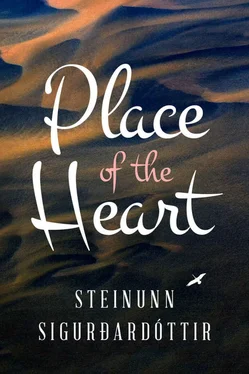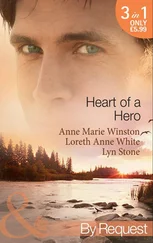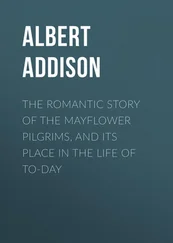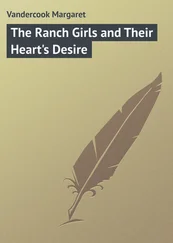That you can count on, little Eisa.
I reach over her, shut the window, and hurry out of this hole in the wall for the final time, towing a garbage bag stuffed with the remains of nighttime excesses left by Edda and company. I bang shut the door, hoping to startle the noisy upstairs neighbors who’ve irritated me to no end with their masterful thuds, sly bodily noises, and slamming doors.
I throw the bag in the garbage bin behind the building and run back through the yard in the gleaming Sunday sun. My hands are empty. Unbelievable for a person who always has something in her hands: shopping bags, bedpans, knitting needles.
The shiny white pickup waits at the gate, ready for departure. There’s something strange about this vehicle, something that’s difficult to pinpoint. Somehow it seems to me like an ambulance, but for sick sheep maybe.
Edda sits wedged against the door in the backseat. She’s packed in among bags and bundles made of plastic, leather, and cloth, her cat eyes open just a slit in a cloud of red hair. I focus all my energy on getting up into the car, first by standing on tiptoe and grabbing the door handle, then gaining a purchase on the step with my right foot and swinging myself into the seat.

As Heiður sets off, I say good-bye to the little street, to the swing set directly opposite where Edda and I swung when things were still good, hypnotized by the old spruce trees and newborn clouds rushing past, swinging to our hearts’ content at breakneck speed after we both ought to have grown out of such a thing.
I say good-bye to the un-Icelandic view over my Three Towers, as I call them — the two spires of Háteig Church and the Maritime College’s one. Behind them is Mount Esja, a bulwark for the capital.
Heiður slips a CD into the player, and an airy Telemann flute composition played by her wafts through the car. With supernatural power it balances out the reek of alcohol coming off my daughter. It’s a relief to hear, because early Sunday morning in the city is always such a chasm of silence that it’s as if Armageddon has come to pass. Although if that’s the case this Sunday, it somehow, incredibly enough, missed three women in an overloaded car.
If you’re going to play that crap, I’m getting out, comes a threat from the backseat.
Heiður gives me a flabbergasted look, as if I were the one who said it.
I try putting on an apologetic expression, as if Edda Sólveig had said it through me.
Although the car is moving, Edda tears open the door and says she’ll jump out if this fluterwauling isn’t shut off immediately.
Heiður turns off the music and says brusquely: I didn’t know the situation was that bad.
She shifts gears with a harsh scrape that resembles some of the sounds she unleashed from her violin as a child, and might well have caused her to switch to the flute.

Heiður pulls up to the intersection in front of Hotel Esja, where no one is crossing, and shakes her head in frustration at having to stop. I shake my head in unison, amazed by the first living thing that we see on our way. It’s a tall man with a camera, taking pains to frame the historical site of the former Dock Wood. He has long dark hair and is wearing a light-colored suit, exactly like my photographer of old. The man I imagined was a gypsy, with a sad smile and an angel hand that he laid on my head. The man I’ve never told anyone about because of a finger that he placed on his lips, saying something in a foreign language that translated as hush . I understood that I couldn’t talk about the gold chain he gave me, and I felt safer not saying a word about meeting him, not even to Heiður.
It occurs to me that this could be the same man, that I should go to him as I did then. I feel as if he has something to tell me, and am on the verge of opening the car door when Heiður drives off. He is, of course, a different man.

Those many years ago, after I arrived at Dock Wood and the tall man had gone his way, there took place the most famous story of my childhood, which exists in many different versions and started somewhere along these lines when I used to tell it to new kids and birthday guests:
Once there were two girls at Laugarnes School. One was terribly small and dark. It just so happens that it was, in fact, me.
From Heiður’s perspective, this was how the story started:
When I came to Hrísateigur and asked for Harpa Eir, her mother said: She’s gone to Dock Wood with an orange. She’s poorly dressed, just in a swimsuit and shorts. Be a dear and go find her.
Between Heiður and me, the Dock Wood account is a horror story, but I cooked it up for Edda in such a way that it became a harmless thriller in which a broken arm is just added spice. The child retold it to her pack of teddy bears and girlfriends missing their front teeth.
Once when poor Mama was a girl she went to Dock Wood in search of wild children who lived in a ditch. It was where Blómaval Garden Center is now, and that’s the honest truth.
The site where the story took place has been leveled, the ditches all filled in. Big houses and scattered trees bordered by asphalt islands now rise from the former sward of northern dock plants. But the sculptor’s domed studio still stands, bearing witness to the story, along with the hulking cement folk who some said raised us kids in that neighborhood.
When I was out and about with little Edda in those parts, she pointed with her sharp finger and said: That’s where you were, Mommy, in your wild-child game, when the Indian and the cowboy came.
I look back over my shoulder, halfway hoping that the teenager in the backseat will ask for the story of stories, but her hostile look reminds me that she’s grown out of it.
Tell it, Mama! demanded my ex-child every time we drove down Sigtún Street or Suðurlandsbraut Road.
I’ll tell you:
When Mama Harpa was at Laugarnes School, we kids liked to run around in the huge Dock Wood, next to the domed building where a hundred tons of concrete were playing a game of sculptures. The scrub in Dock Wood was as high as the shoulders of most kids my age, but came up to my nose because I’ve always been so small. Everyone knew that mysterious beings known as the WILD ONES lived there. They were very small and dark, with curly hair. They were actually wild children but hardly human. It was difficult to explain their existence, although everyone knew that they were orphans, among various other things. They lived mostly on dock, but if they grew hungry in winter they might kill rats for food. They were distinguished from other children by the fact that they had no belly button. That’s because they hadn’t been born in the usual way. These savage Wild Ones were rarely seen, since few dared to venture deep into the woods. Sometimes, we kids tried to stay hidden for hours, without a sound, in order to lure them out into the light of day.
During the summer following third grade, we had one of those precious warm days in Reykjavík that throw everything out of whack. I wanted to go play in a swimsuit and shorts. Mom didn’t want me going out like that, because I was always supposed to be so ridiculously well dressed, but I pestered her hard and she unexpectedly gave in. She slipped me an orange when I went out the door declaring that I was going to Dock Wood.
I was determined to find a Wild Child, even if it meant searching for the entire day. As soon as I’d crossed the plank over the shallow ditch, I crawled on my hands and knees, head bent down, so the Wild Children wouldn’t notice me right away. They were, in fact, incredibly timid, which was one reason why so few had seen them. A big boy at Laugarnes School was supposed to have come across a girl and boy as they cuddled in a large cardboard box, dressed in skins like Stone Age people, with hay for a blanket and mattress. But the boy, who was called Friðrik or possibly Ingvar, had quit school and moved, to Grenivík or Grindavík, and that’s why it was impossible to get hold of him and ask him more about it.
Читать дальше













